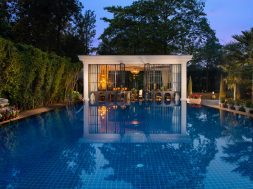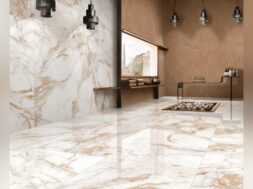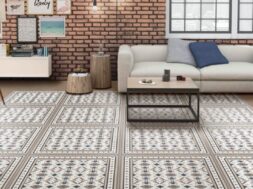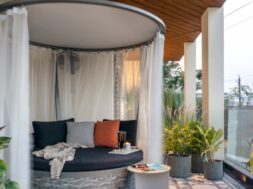Building an Eco-friendly décor

Recent trends denote culturally authentic designs, which are made customarily from eco-friendly products like wood, glass and natural materials, when astutely crafted and designed add to the richness of the décor. Green homes’ decor depends on how sustainable it is.
Indian way of life and the culture of this land has always advocated for adopting close-to-nature inhabitation and avoid over exploitation of natural resources. Today, it has become a global call to save environment. Climate changes, increased pollution, lowered air quality and depleting green cover is a major concern now for the world. Thus today, urban development encompasses inclusion of eco-friendly interiors as well as surroundings while designing buildings to be called green-building. These buildings have special provisions for energy conservation and optimum resource management based on eco-friendly norms.
According to Charanjit Singh Shah (Founding Principal), Creative Group, there are certain measures needed to be addressed—such as maximum space utilisation, usages of energy-efficient and non-toxic construction materials, energy efficient lighting and water conservation.
“Whether the ultimate design goal is decoration or architectural detailing, all interior designers must stay abreast with the growing segment of sustainable or “green” design. From the use of rainwater collection to supplement wastewater needs, to using sustainable materials, innovation is high concerned with sustainable interior design,” said Shah pointing out that Singapore’s Changi Airport known for its visitor experience, in addition to general amenities, the terminals are spell-bounding. Terminal 1 hosts a cactus garden, a water lily garden, and a discovery garden, Terminal 2 hosts an LED-lit ‘enchanted garden,’ a 700-flower orchid garden, and a sunflower-packed rooftop and Terminal 3 hosts one thousand butterflies in a tropical habitat—the world’s first butterfly garden in an airport. Terminal 4 focuses on Singaporean history, where art and architecture reflect the Peranakan culture.
An effective measure in creating a sustainable interior design composition, natural light aids to reduce the over exploitation of non-renewable resources to a large extent. Presence of requisite number of usable openings, amalgamate to allow additional entry of renewable day lighting, thus eliminating the need to switch to artificial lighting.
“Amalgamating a user- friendly space planning and a relatable décor set-up while maintaining the micro-climate in its blooming status, is what circumscribes the emerging trends of today and the imminent future,” says Manish Dikshit, Founding Principal, AUM Architects.
Design Matrix
In India residential structures should be designed keeping in mind cross ventilation and using natural light to avoid usage of artificial cooling and electric systems. Commercials should be designed with open able windows as well as central core opening so as there is cross ventilation. Thus, places where light and breeze are important, the building should be made porous. Some of the measures are maximum space utilisation, efficient interior spaces micro-housing developments, or “apodments,” energy-efficient construction materials, Interior designers, materials produced in socially responsible manner.
Mainly usage of fixed glass and concrete boxes needs to be avoided. A play of form avoiding the box needs to be explored for beautiful structures as well. In architecture or interior an organic approach always would solve all issues and help to create green buildings. “Usage of water harvesting and creating more water bodies will be the main revolutionary factor in achieving greener cities as well as green energy efficient buildings,” says Sudiksha Parekh, Imprints Architects.
Eco-friendly products like wood, glass and natural materials, when astutely crafted and designed add to the richness of the decor. Green homes decor depends on how sustainable it is, it’s not about just using energy efficient light bulbs and cutting back on power decorating our living spaces with products that can impact your carbon footprint.
“Home trends come and go but it is not always sapient shopping for latest furniture and decor accessories, always a challenge to consider a new way of redecorating subsisting pieces of furniture decor item,” said Designer Nandita Ghatge, Kagal Craft. Efficient planning ensured appropriate segregation of kitchen, back end and dining areas, for ease of servicing and to integrate the functions without creating unnecessary load on the building. “Effluent treatment units have been integrated and installed to prepare clean residues before eviction for a safer greener environment,” said Ishvinder Kaur, Creative Director, ivpartners.
Accessories & Lightings
When it comes to eco-friendly home adorning, there are tons of acceptable materials. The most facile way would be a way to integrate them into your design. Being innovative with organic cotton, bio glass, wood, bamboo, rattan, leather. Whether to engender decorations on your or finding products that gives you a great offer of affordable and decorative appeal.
There are several options to play with while decorating any interior space in an eco-friendly manner. The most effective way is to add biophilic designs by using greens, water, light and other natural materials such a wood. Adding plants for greens, wood in furniture, flooring and counter tops and some other options like bamboo, jute objects are one of the best ways to fill your space with natural and eco-friendly accessories around your space. Moreover, usage of the right quality of paint for vertical interfaces, reduces indoor VOC emissions, thus creating healthier liveable conditions. “Usage of green elements like potted plants, recycled woods and handmade ceramics, are few of the materials that are gaining momentum to create an eco-friendly design”, said Kaur.
Today there are number of players in the lighting space who are manufacturing and supplying energy efficient lighting solutions. For example, Jaquar Lighting’s LED lighting segment has been expanding their horizons in fields of innovation. “Our eco-friendly lighting is Vivid Smart Bulbs that offers illumination of the spaces with 7 million different hues, so that there is a plethora of lighting choices available to the consumers,” said Ranbir Mehra, Director, Jaquar Lighting.
Besides, the bulbs work with wireless connection, supported by Bluetooth 4.0 and an app that is available on both iOS and Play Store. “While the CCT adjustable feature allows you to change the different shades from cool white to warm white and seamless dimming, the brightness range can also be adjusted according to your mood from 2 to 100 per cent,” informs Mehra.
Nemo’s unique selection of icons, realised by the designers that have provided a fundamental contribution to the creation of the contemporary design: Le Corbusier, Vico Magistretti, Franco Albini, Charlotte Perriand. Having eco-friendly lamps and light fixtures is key to greening your lighting and thus Nemo with its lighting fixtures like Light, Kuta, Claritas, AM2Z and Lampe De Marseille helps to keep the lighting design simple, elegant and eco-friendly, said Roopesh Gupta, MD & CEO, P3 Architectural Solutions.
Quasar unique LED decorative fixtures offers a dual benefit to its customers – this saves the consumer money and places less demand on our energy grid and, ultimately, less demand on the natural resources used to power that grid along with our products like spectre, citadel, universe, universe square and sparks, said Arjens Teun Van Gammeren, Owner, Quasar lightings.
Certain measures needed to be addressed—such as maximum space utilisation, usages of energy-efficient and non-toxic construction materials, energy efficient lighting and water conservation.
Charanjit Singh Shah, Founding Principal, Creative Group
Amalgamating a user- friendly space planning and a relatable décor set-up while maintaining the micro-climate in its blooming status, is what circumscribes the emerging trends of today.
Manish Dikshit, Founding Principal, AUM Architects
Usage of water harvesting and creating more water bodies will be the main revolutionary factor in achieving greener cities as well as green energy efficient buildings.
Sudiksha Parekh, Imprints Architects
Home trends come and go but it is not always sapient shopping for latest furniture and decor accessories, always a challenge to consider a new way of redecorating subsisting pieces of furniture decor item.
Designer Nandita Ghatge, Kagal Craft
Quasar unique LED decorative fixtures offers a dual benefit to its customers – this saves the consumer money and places less demand on our energy grid.
Arjens Teun Van Gammeren, Owner, Quasar lightings
Usage of green elements like potted plants, recycled woods and handmade ceramics, are few of the materials that are gaining momentum to create an eco-friendly design.
Ishvinder Kaur, Creative Director, ivpartners
Our eco-friendly lighting is Vivid Smart Bulbs that offers illumination of the spaces with 7 million different hues, so that there is a plethora of lighting choices available to the consumers.
Ranbir Mehra, Director, Jaquar Lighting
Nemo with its lighting fixtures like Light, Kuta, Claritas, AM2Z and Lampe De Marseille helps to keep the lighting design simple, elegant and eco-friendly.
Roopesh Gupta, MD & CEO, P3 Architectural Solutions
15
Cookie Consent
We use cookies to personalize your experience. By continuing to visit this website you agree to our Terms & Conditions, Privacy Policy and Cookie Policy.









